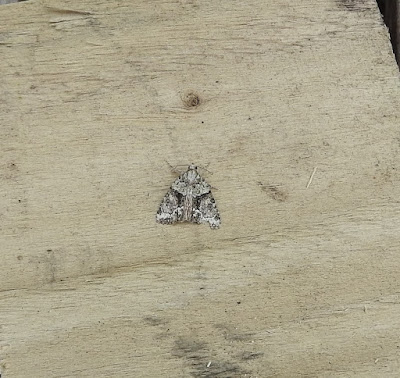Lade - mild, cloudy, NW2 - A terrific morning birding the local patch with the undoubted highlight being a Quail singing intermittently from grasslands between south lake and the airport, and close enough to be included as a new bird for my site list. This one is the third locally following on from another heard near Belgar Farm yesterday evening (PB) and the St Mary-in-the-Marsh bird which is also still vocalising (CP). How many more, I wonder, are singing away undetected out on the Marsh farmland... Also noted flying over the shingle ridges out back was a fresh juvenile Marsh Harrier, my first of the summer. The wetlands were once again packed out with water fowl including over 100 Great Crested Grebes, 300 Pochards and 400 Coots making up the bulk, plus a scattering of Dabchick, Gadwall, Tufted (four broods of ducklings on south lake) Mallard and a single Black-necked Grebe, the first of autumn. A steady stream of Black-headed and Mediterranean Gulls and Common Terns came and went, while Common Sandpiper, Curlew, Common Buzzard, Green Woodpecker were also noted. A trio of Yellow Wagtails along the main track fence-line and several Willow Warblers by the ponds confirmed that migration was also underway for the passerines.
Quail field, LadeTree-lichen Beauty
Last night the humid, still and overcast weather conditions were perfect for moths and hundreds flocked to the garden light trap. It took over an hour to sift through several hundred moths of 36 species of macros (Shuttle-shaped Dart and Large Yellow Underwing each reached three figures) the highlight being two Tree-lichen Beautys.
Little Ringed Plovers, Firth washout
Wheatears, St Mary`s Bay
Yesterday at St Mary`s Bay a flock of five Wheatears along the sea wall was of note, plus two Grey Plovers on the beach. A visit to Hanson hide in the afternoon produced a variety of passage waders including several Common Sandpipers and Dunlins, a Ruff, a Greenshank and a Wood Sandpiper, while on Burrowes five juvenile Little Ringed Plovers showed well in front of Firth washout.








Like your rename of firth
ReplyDeleteHi Ken, apparently the area in front of Firth was where the excavated aggregate was washed and graded from the old quarry workings, which is why there is deposit of sand and fine gravel. A good spot for terns and waders. Good birding, Paul.
ReplyDelete